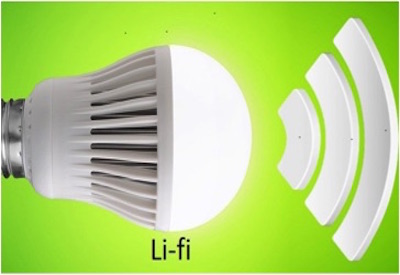Why Strategic Light Therapies Offer New Hope for People with Parkinson’s Disease

May 10, 2017
Parkinson’s Disease was once thought of as “simply” due to a lack of dopamine production in the brain. Dopamine is the chemical responsible, amongst other things, for the transmission of movement signals between brain and body, and for rewarding specific behaviours with feelings of well-being.
In recent years, we have come to understand the profound importance of the highly complex interplays between various hormones and neurotransmitters in the body and brain. We now know that treating medical issues in terms of a shortage or overproduction of any one of these, in isolation, is highly oversimplistic. We must also consider various imbalances and interactions with other biological chemicals too.
Example: histamine and dopamine
As a specific case in point, there is a distinct interaction between histamine, which is produced through allergic reactions (and we’ve found that many people with PD are very sensitive to this kind of inflammation, especially when it comes to food), and dopamine. In fact, histamine production often results in the suppression of dopamine, and this is why exposure to allergens can markedly impact on PD symptoms in a negative way. Applications of infrared light therapy is now being proven to have a role in combatting allergic responses, and this may be why studies of narrowband infrared treatments for Parkinson’s are showing such promise.
The importance of the interplay between melatonin and dopamine
In healthy people with good sleep patterns, dopamine and melatonin (the hormone responsible for sleepiness) work together in rhythm. During hours of sunlight, dopamine increases and melatonin decreases, while at night melatonin is higher and dopamine levels are at their lowest. In people with PD, not only is dopamine production affected, but its linkage with melatonin is completely broken too. These two chemicals no longer work in rhythm. So, while there may be a shortage of dopamine in people PD, just as critically there may be a corresponding severe over-production of melatonin. It is therefore simply not clear which symptoms and problems encountered in people with Parkinson’s are due to dopamine shortage alone and which are due to the broken interaction between dopamine and melatonin (and other chemicals).
The disaster of the dopamine-melatonin imbalance
One of the consequences is major disruption to sleep patterns in people with PD. Insomnia, daytime fatigue, and several periods of wakefulness during the night are all commonly experienced. Broken sleep patterns, or the disruption of the so-called circadian rhythm, has severe consequences for the health of otherwise well people. For people with chronic neurological diseases such as Parkinson’s, it is potentially disastrous. This is because neuroplasticity (brain self-healing through the creation of new neuronal pathways and the removal of redundant or damaged ones), and processes which remove toxins, dead cells and cell excreta from the brain, typically occur under conditions of prolonged sleep.
What’s wrong with current drug based therapies?
The current standard treatments of Parkinson’s are based on the now outmoded ideas that the disease is due to dopamine shortage alone. The available pharmacological solutions are all aimed at replacing dopamine in the brain or stimulating dopamine producing cells to work harder (and, presumably, as a consequence, to burn out more quickly?), without paying attention to nor addressing the imbalances and interactions with the other hormones or neuro-transmitters. I particularly gasp in horror when I hear that healthcare professionals, who clearly lack this understanding, are prescribing melatonin in a very ad hoc way as a solution to insomnia in PD, thus potentially increasing the imbalances and worsening the symptoms over the long term.
Resetting the balance
A number of important studies have now clearly demonstrated that strategic use of light therapy can be highly beneficial for people with Parkinson’s. Recent studies aimed mainly at addressing the poor quality of sleep associated Parkinson’s, as well as those aimed mainly at addressing depression in people PD, are also inadvertently showing improvements in the motor symptoms of the participants too. It is believed this is because strategic light therapies are actually helping to restore the natural balances between dopamine and melatonin and restoring the circadian rhythm. Previous strategic light therapy research aimed directly at the PD symptoms themselves have shown very significant benefit, with participants in these studies reporting up to 50% improvement and, simultaneously, up to 50% reduction in Parkinson’s medication. Moreover, unlike standard drug therapies for PD, these participants show a stable (non-declining) condition for up to ten years. See my previous articles for further background.
This article was first published on the website Out-Thinking Parkinson’s: www.outthinkingparkinsons.com/. Interested in this topic? Here’s a related article on the same website: Report on Wearable Light Therapy Technology Applied to Parkinson’s Disease.
Image courtesy of 9comeback at FreeDigitalPhotos.net.
Dr. Gary Sharpe, PhD, is a scientist, engineer, writer and digital media expert, diagnosed with Early Onset Parkinson’s Disease eight years ago. Out-Thinking Parkinson’s was created with the help of Deb Helfrich, a philosopher, author and wellness mentor who specializes in astute listening and keen observation. Together, they started developing a method for recovering from Parkinson’s Disease. Today, Out-Thinking Parkinson’s has become a major resource, where Gary and colleagues from around the world, who also have an insider’s perspective of PD, share their knowledge, philosophies and experience of living well with PD, and, also, record their stories of recovery through holistic approaches.













